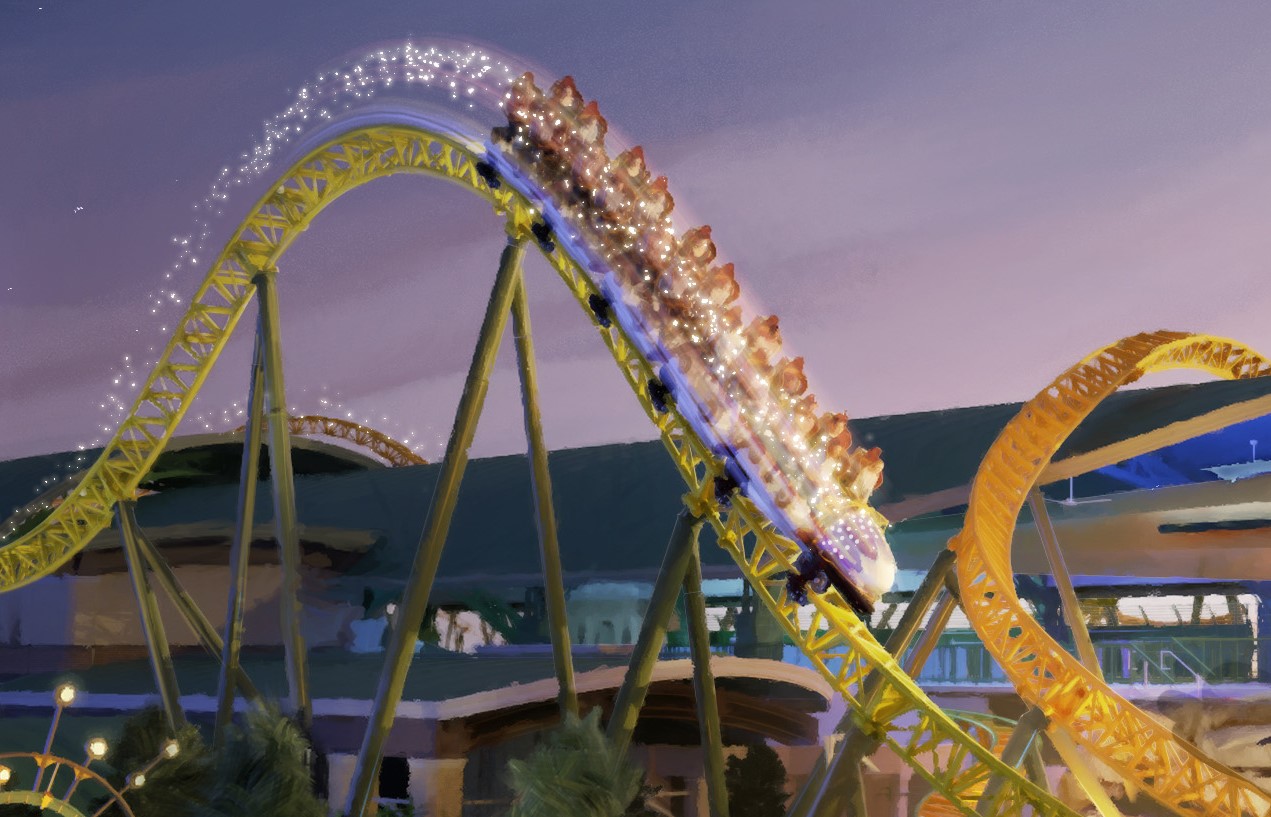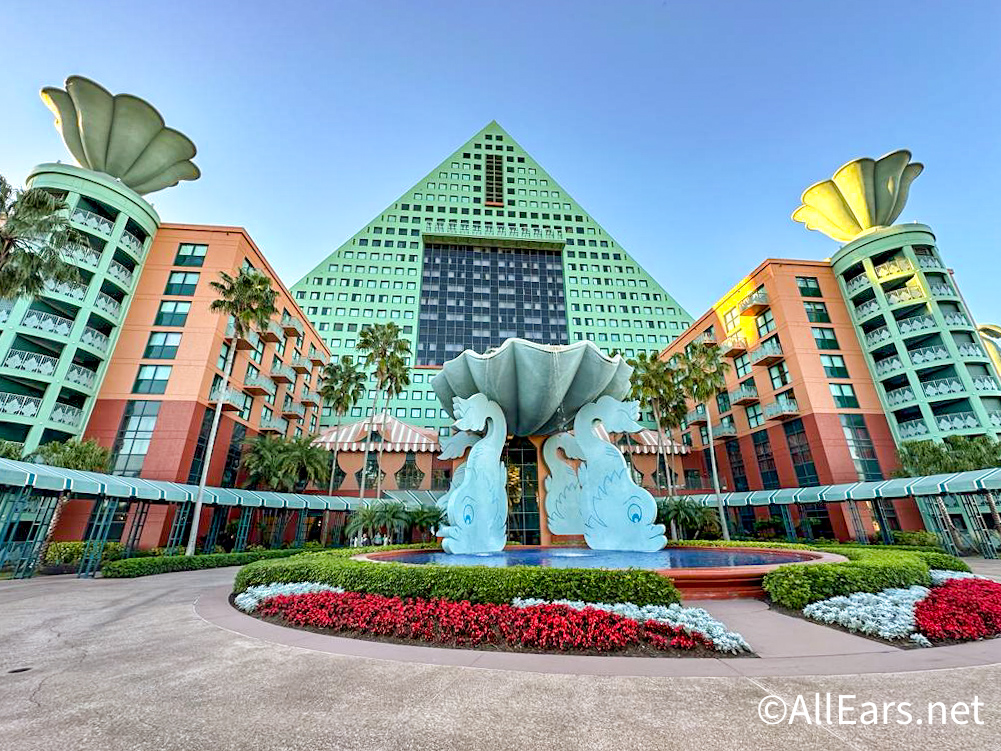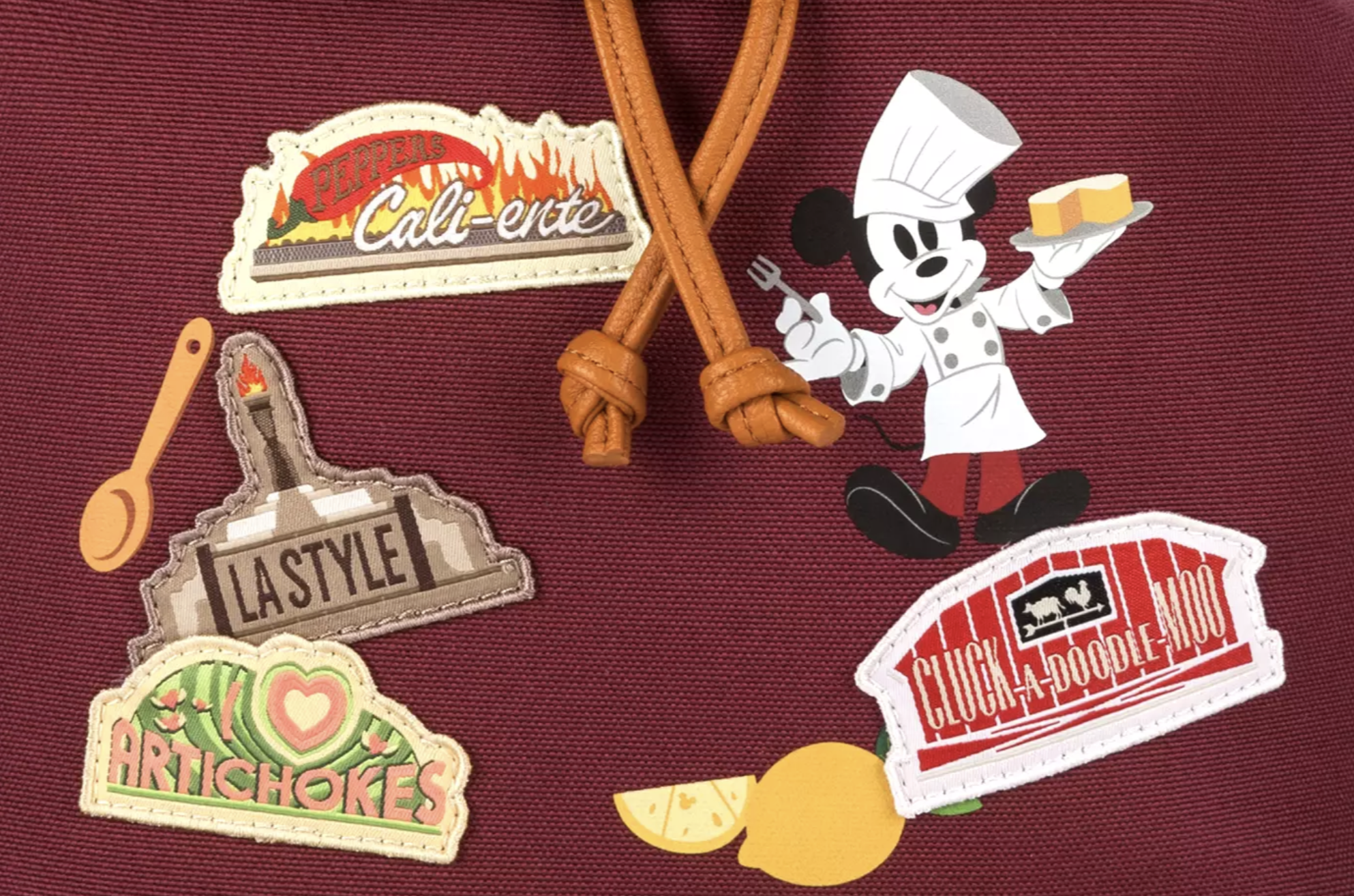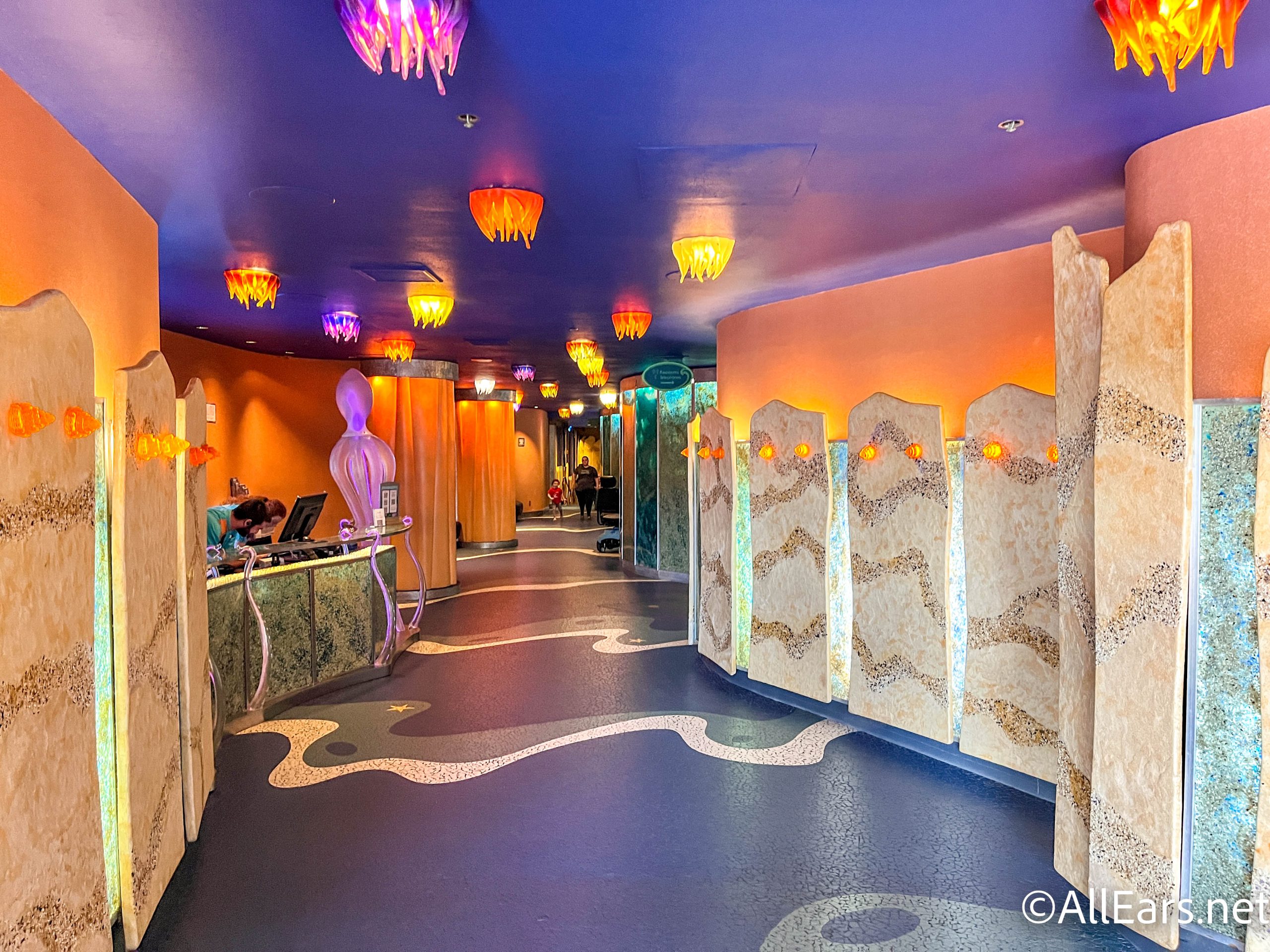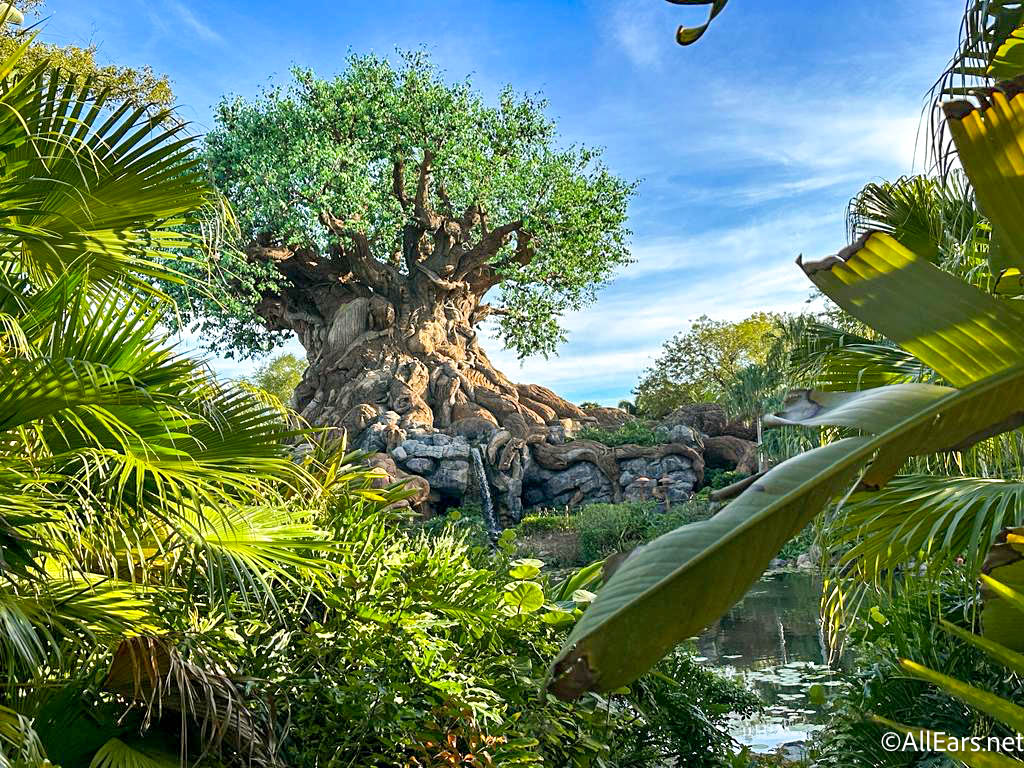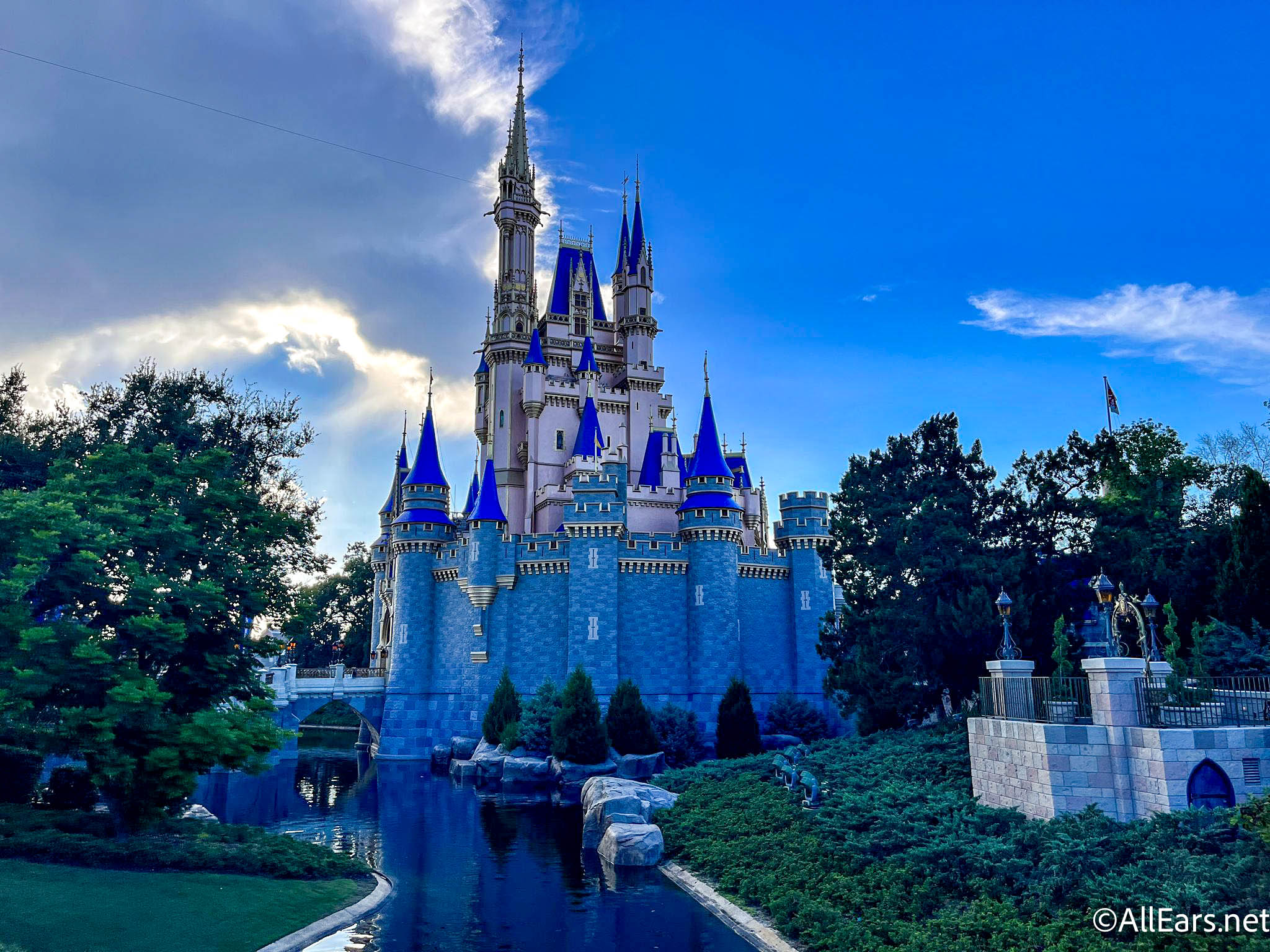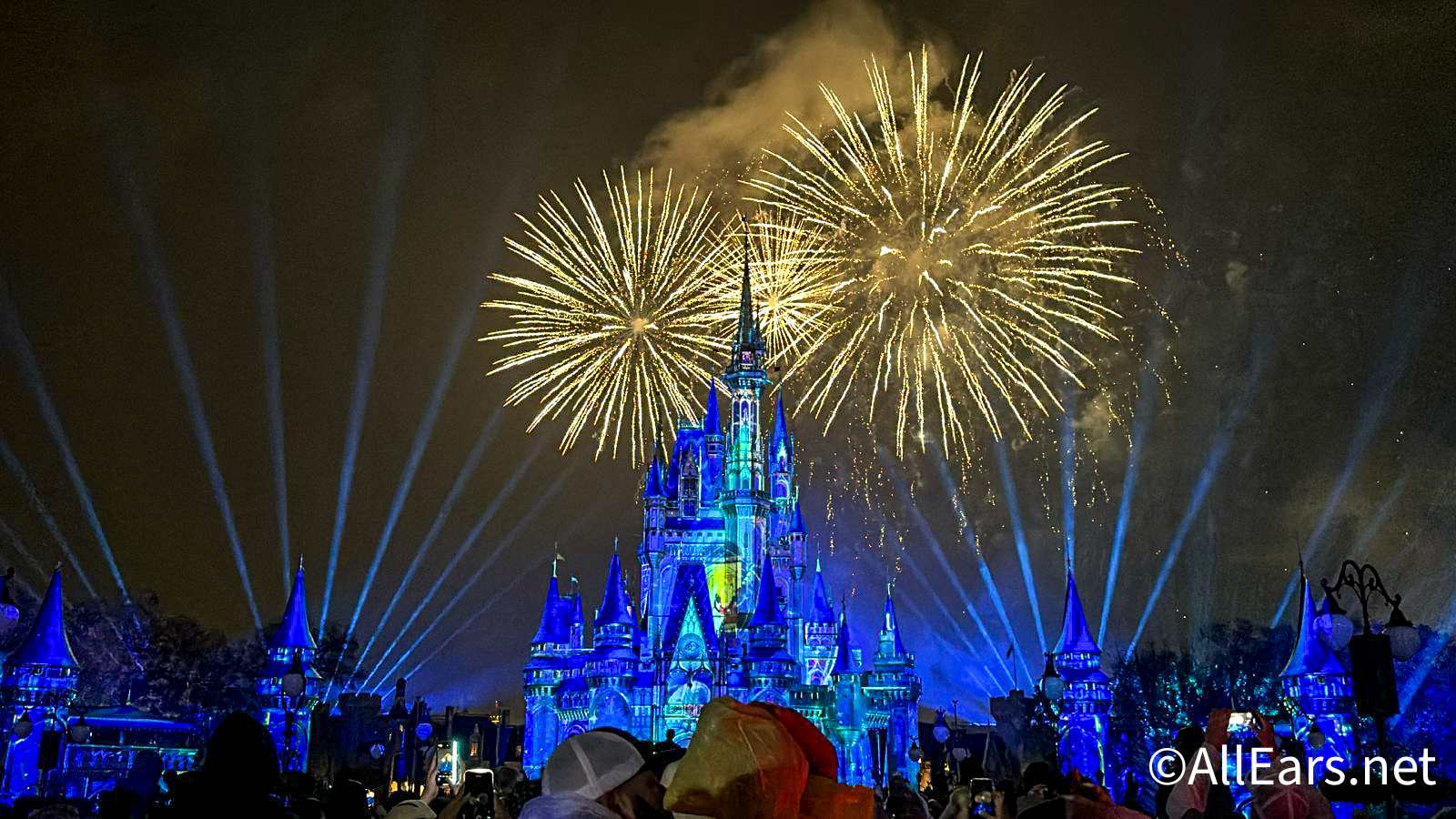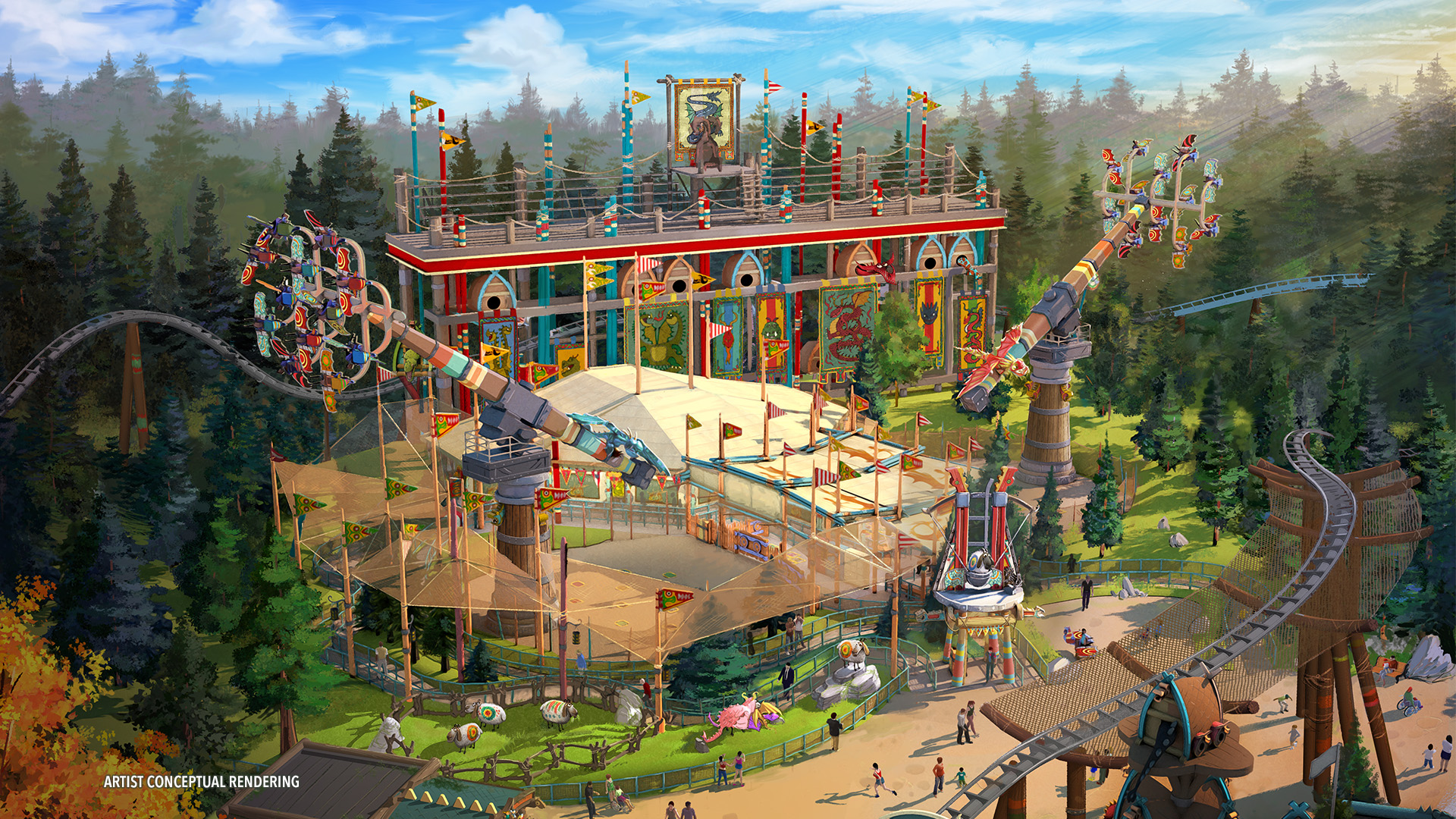Walt Disney World Chronicles: The Swan and Dolphin
by Jim Korkis
Disney Historian
Feature Article
This article appeared in the April 17, 2012 Issue #656 of ALL EARS® (ISSN: 1533-0753)
When is a Disney hotel not a Disney hotel? The answer to that question is probably when it is the Walt Disney World Swan and Dolphin Hotel.
These are the only hotels carrying the Disney name that are not operated by Disney and do not offer all the same amenities as the other Walt Disney World resorts. The Dolphin Resort is owned and operated by Starwood Hotels & Resorts Worldwide under the Sheraton Hotels brand. The Swan is owned by Tishman Hotel Corporation and operated by Starwood Hotels & Resorts Worldwide under the Westin brand.
By the time Michael Eisner became Chairman and CEO of the Disney Company in 1984, the company's connection to innovative architecture had seemingly been in hibernation. Eisner adamantly rejected a plan to build two rather ordinary hotel towers (which he referred to as "refrigerator boxes") near Epcot.
Eisner hired the award-winning Princeton architect Michael Graves — who had never designed a hotel before — to design the Walt Disney World Swan and Dolphin hotels. The hotels were necessary to accommodate the convention groups who were staying at off-property hotels that had greater convention space than the existing Disney resorts. When the two hotels opened in 1989 and 1990, they offered the largest hotel convention space in the Southeastern United States.
In March 1997, Graves did a presentation at the Disney Institute Performance Center on his projects for The Walt Disney Company. Afterwards, several of us who were instructors at the Disney Institute took Graves to the Institute's now-defunct Seasons restaurant to continue the conversation. This column includes information and quotes from that informal get together.
Earlier, Graves had designed the Team Disney corporate building in Burbank, California. Graves said when he was in meetings with Michael Eisner, Eisner told him: "Look, everyone here will have some design priorities for you, but I only have one priority. When I come in to work each morning and go up to my office, I'll probably have very little to smile about. So do something that will make me smile when I arrive."
When his first designs for the Team Disney building were rejected, Graves came up with the concept of having the Seven Dwarves as caryatids. A caryatid is a sculpted figure serving as an architectural support, taking the place of a column or a pillar supporting horizontal bands. "Because Snow White and the Seven Dwarves was truly the foundation of the Disney Studios and supported the growth of the company, just as the dwarves are supporting the building," claimed Graves.
The majority of our conversation that night centered on the Walt Disney World Swan and Dolphin hotels. Graves was more than happy to reveal his thinking behind the choices he made.
The "black box" area on the Walt Disney World Dolphin, which many Disney fans mistakenly believe was meant to be an entrance for the monorail similar to the Contemporary resort, is actually the heart of a mountain.
Graves' basic concept for the story of the Walt Disney World Dolphin was that it was a tropical island formed by a sudden cataclysmic event — an upheaval by an underwater volcano or earthquake. When the island emerged from under the sea, it lifted dolphins out of the water, and these are the dolphins on the roof. A mountain struggled to thrust its way upward out of the tropical rain forest. That is the reason for the banana leaves painted along the side of the building to suggest a tropical forest.
The struggle caused the heart of the mountain to explode, and the water cascades nine stories down the side of the hotel, passing through five clamshell basins to a fountain, eventually splashing into Crescent Lake. Notice that the walkway from the Walt Disney World Dolphin to the Walt Disney World Swan has railings and landscaping that mimic waves. The water splashes up onto the Walt Disney World Swan and that accounts for the waves painted on the side of that hotel.
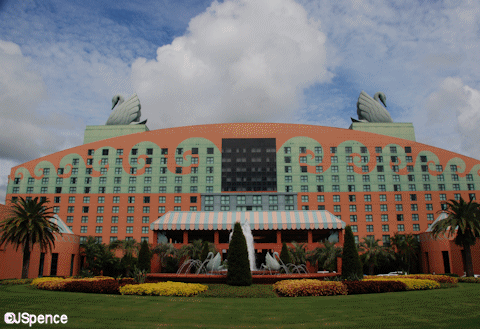 Two swans were so awed by this spectacle that they alighted on the top of the waves to get a better look and were magically turned into stone by the awesome sight. Graves deliberately selected dolphins and swans, which "were not part of the existing Disney mythology." He had hopes that they would then be developed further as Disney icons once he had selected them.
Two swans were so awed by this spectacle that they alighted on the top of the waves to get a better look and were magically turned into stone by the awesome sight. Graves deliberately selected dolphins and swans, which "were not part of the existing Disney mythology." He had hopes that they would then be developed further as Disney icons once he had selected them.
The dolphins are not mammalian dolphins, but a stylized version of a nautical dolphin. The dolphin image was inspired by the work of artists such as Italian sculptor Gian Lorenzo Bernini. An example of Bernini's dolphins can be seen in the King Neptune fountain in the Italian pavilion at Epcot.
However, there is a major difference that Graves pointed out to us. Bernini's dolphins had mouths that curved downward, and Eisner insisted that wasn't going to happen on Walt Disney World property — so Graves' dolphins have their mouths curved upwards as if smiling.
Designed by Graves, the swan statues (like the dolphin statues) were created from steel, wood and fiberglass, and were believed to be the largest structures of their kind in the world at the time. Since there were no existing samples to work from, Disney artist Gary Graham, following Graves' design, sculpted the swan models out of Styrofoam. These were then computer-photographed (photogrammetry) in a process that turns the shapes into a digitized database.
The photogrammetric information was then sent on to a shipbuilding company in Wisconsin. There it was put into a computer that automatically cut the wooden ribs to exact specifications and imprinted the ribs with numbers and location directions. The ribs were then delivered to the statue site, where they were fitted to a steel frame. Once assembled, a fiberglass covering was carefully brushed on and then covered with five layers of laminate. The swan statues were then sanded, painted and ultimately lifted into place in May 1989.
Completed, the swan statues, referred to as "heroic" statues, are each 47 feet high. And at a combined weight of 56,000 pounds, they required a multi-ton, 70-foot crane to lift them and place them atop the hotel. They were placed on specially constructed pedestals at either end of the hotel's roof, which support and display them.
The dolphin statues are each 63 feet high. All the roof sculptures are hollow inside, except for the structural beaming, and they have internal staircases and trapdoors for maintenance purposes.
At the Walt Disney World Dolphin, the sculptures are three-dimensional where guests can't touch them and two-dimensional, like in the indoor fountain, where they can be touched.
At the Walt Disney World Swan, it is reversed and the sculptures are generally three-dimensional where they can be touched by guests (like the interior fountain), but two-dimensional (like the monkeys and parrots in the trees) where they can't be touched.
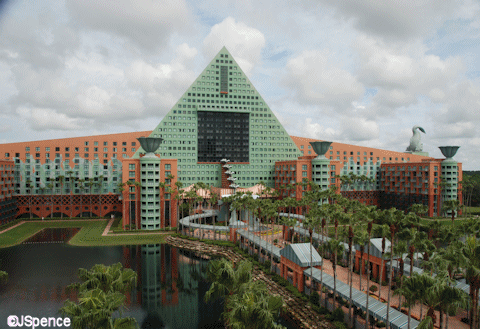 The dolphins in the fountain facing the Walt Disney World Swan were supposed to be three-dimensional, but Graves was told to space them out wider because they obstructed the view. Instead, Graves simply sliced the dolphins, making what he called "dolphin filets," and keeping them exactly where they were but opening up the space. He also made the fountain smaller since the dolphins are now two-dimensional and needed to be able to be touched.
The dolphins in the fountain facing the Walt Disney World Swan were supposed to be three-dimensional, but Graves was told to space them out wider because they obstructed the view. Instead, Graves simply sliced the dolphins, making what he called "dolphin filets," and keeping them exactly where they were but opening up the space. He also made the fountain smaller since the dolphins are now two-dimensional and needed to be able to be touched.
Where is the entrance to the Walt Disney World Dolphin? No, it is not at the porte cochere where cars drop off their passengers. According to Graves' concept, it is facing the Walt Disney Swan.
When you enter a hotel, the check-in desk is usually on the right-hand side because most guests are right-handed. In the Walt Disney World Dolphin it is on the left-hand side. The tent-covered rotunda is also disorienting without landmarks or icons for guests to determine which direction they need to go to get to their room.
These were deliberate choices to create a sense of disorientation by Graves.
"It was to be a hotel for conventions, and when you attend a convention, what do you want the participants to do? You want them to think differently, to see things from a different perspective. So the design is encouraging that," said Graves.
The Walt Disney World Swan was completely different and meant to be a mirror image philosophically of the Walt Disney World Dolphin. The entrance is where the porte cochere is. The check-in desk is on the right-hand side. The hallways are designed in an angular fashion and are shorter so that is it easier to locate where you are and where you might want to go.
Graves partnered with the interior design firm of Wilson and Associates to create rich beach-themed color schemes, hand-painted murals, lily pond carpets, room doors painted to look like striped cabanas, seashell light fixtures and more to capture the spirit of a playful tropical beach.
"Both inside and out, the hotel was designed to echo the tropical Florida landscape, as well as the fun and whimsy of the nearby Disney attractions and an aura of fantasy that appeals to guests of all ages," said Graves.
The stories of the Walt Disney World Swan and Dolphin were severely readjusted a few years ago with a major interior redesign that no longer supported the original story. It was felt that these changes were needed to attract a more upscale business traveler.
Both hotels have now transitioned to what is called "modern luxury," which means the design is less thematic of a playful beach story and more opulent than before. Graves was involved in the room redesign, but not in the makeover of the public space.
Both lobbies have been redesigned and the original story that Graves was attempting to tell has been retired. There was no mourning when the interior storyline shifted because neither cast members nor guests understood nor appreciated the story that Graves was attempting to tell. However, the exterior of both hotels are reminders of that original story.
=================
RELATED LINKS
=================
Other features from the Walt Disney World Chronicles series by Jim Korkis can be found in the AllEars® Archives:
http://allears.net/ae/archives.htm
=-=-=-=-=-=-=-=-=-=-=-=-=
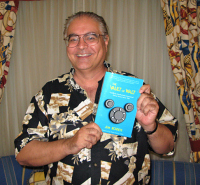 ABOUT THE AUTHOR:
ABOUT THE AUTHOR:
Jim Korkis is an internationally respected Disney Historian who has written hundreds of articles about all things Disney for more than three decades. He is the author of the recently published book The Vault of Walt, which contains nearly 40 chapters of untold Disney stories. As a former Walt Disney World cast member, his skills and historical knowledge were utilized by Disney Entertainment, Imagineering, Disney Design Group, Yellow Shoes Marketing, Disney Cruise Line, Disney Feature Animation Florida, Disney Institute, WDW Travel Company, Disney Vacation Club and many other departments.
Read more about The Vault of Walt: http://astore.amazon.com/debsunoffiwaltdi/detail/0615402429
-o-o-o-o-o-o-o-o-o-o-o-
Editor's Note: This story/information was accurate when it was published. Please be sure to confirm all current rates, information and other details before planning your trip.



